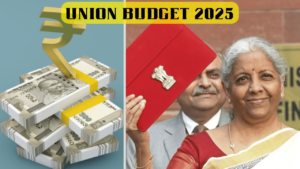Delhi Water Crisis – Analyzing the Hurdles and Crafting a Sustainable Solution for the India Capital!

Delhi, the bustling capital of India, is grappling with a severe water crisis exacerbated by a relentless heatwave. This issue is not new; Delhi has long been water-stressed, and the current situation has forced many residents to rely on water tankers to meet their daily needs. Here, we delve into the root causes of Delhi water scarcity, its profound impacts, and sustainable solutions to mitigate the crisis.
The Scale of the Problem
Did you know that five of the world’s 20 largest cities facing extreme water stress are in India, with Delhi ranking second? This alarming statistic comes from the Composite Water Management Index released by NITI Aayog in 2019. Delhi largely depends on neighboring states for its water supply.
To get to homes, water travels past nine water treatment plants via the Yamuna, the Upper Ganga Canal via Muradnagar in Uttar Pradesh, the Carrier Lined Channel (CLC) Munak, and the Delhi Sub-Branch (DSB) canals from Haryana. The city is still unable to meet its water needs in spite of these efforts. Delhi is dependent on its quickly running out groundwater supplies because the Delhi Jal Board (DJB) can only produce 1,000 MGD per day, compared to the city’s daily requirement of 1,290 MGD.
Root Causes of the Delhi Water Crisis and Scarcity
1. Over-extraction of Groundwater
In recent years, the absence of additional water supply from neighboring states has forced the DJB to increase groundwater extraction steadily. From 86 MGD in 2020, extraction rose to around 135 MGD by 2024. DJB plans to add 1,034 tubewells to extract an additional 23.45 MGD. This over-reliance on groundwater has led to poor water quality, depletion of the water table, and a threat to future water supplies.
2. Pollution of Water Sources
High ammonia levels in the Yamuna River have long plagued Delhi’s water supply. When ammonia levels exceed 2.5 parts per million, water production at key treatment plants like Wazirabad and Chandrawal drops by 50%. Numerous drains and rivulets discharge toxic waste from industries into the Yamuna, further contaminating the water. Despite oversight by pollution control boards and interventions by the National Green Tribunal (NGT), the Yamuna remains one of the most polluted rivers in India.
3. Drastic Climate Change
Climate change has exacerbated Delhi’s water problems. According to the Delhi State Action Plan on Climate Change released in June 2023, the city could face economic losses of Rs 2.75 trillion by 2050 due to climate impacts. The plan highlights that rising temperatures and erratic precipitation patterns pose significant challenges to the city’s water supply.
4. Inefficient Water Management
Inefficient management has compounded Delhi’s water crisis. For instance, water rationing strategies have been implemented, reducing supply frequency in several South Delhi neighborhoods. While these measures aim to conserve water, they often leave many residents struggling to meet their basic needs.
5. Unwanted Inter-State Water Disputes
Disputes over water allocation from the Yamuna River between Delhi and Haryana have intensified. Haryana accuses Delhi of drawing more water than allocated, leading to legal battles and Supreme Court interventions. Effective management by the Upper Yamuna River Board is crucial for equitable water distribution among basin states.
Impact of Water Scarcity among People
- Health Issues
Reduced access to clean water forces marginalized communities to rely on unsafe sources, leading to waterborne diseases. Insufficient water supply also hampers the maintenance of public sanitation facilities, increasing the risk of illnesses like cholera.
- Social and Economic Impact
Poor hygiene and sanitation due to water scarcity result in higher healthcare costs and reduced productivity. Marginalized communities often depend on costly and unreliable water tankers, straining their economic resources further.
Let’s Delve into some Sustainable Solutions to Address Delhi Water Crisis & Scarcity
- Water Conservation and Management
Delhi’s government has implemented measures to curb water wastage. Residents face fines for using hoses to wash cars, allowing tanks to overflow, or using domestic supplies for construction. The Delhi Jal Board’s Summer Action Plan 2024 includes nine plant laboratories to monitor water quality at each treatment stage, ensuring a reliable supply.
- Technological Interventions
The DJB, in collaboration with Hitachi India, has introduced smart technology to monitor the water distribution network in Pitampura. This project uses field sensors, remote terminal units, smart meters, and a Pipe Network Management System to enable real-time monitoring, ensuring equitable distribution and effective management of non-revenue water.
- Infrastructure Development
To address the crisis, it is imperative to enhance the production and supply of potable water. The DJB has increased infrastructure charges for new water connections and expanded the water distribution network in unauthorized colonies. As of 2024, piped water supply has been commissioned in 1,638 of 1,799 unauthorized colonies, with plans to extend it further.
- Apt Implementation of Policy and Governance Reforms
An integrated approach to land-use planning and zoning, which includes water as a key aspect, is essential for sustainable urban development. The NITI Aayog report suggests that state and city governments should consider regional water resource availability when creating city plans and restrict unsustainable development activities. Inter-state cooperation is crucial for mitigating Delhi’s annual water crisis, especially during the summer months.
Conclusion
Delhi water crisis is a multifaceted issue that requires immediate and sustained action. Over-extraction of groundwater, pollution of water sources, climate change, inefficient water management, and inter-state disputes have all contributed to the current situation. Addressing these challenges requires a combination of water conservation measures, technological interventions, infrastructure development, and policy reforms. Only through collaborative efforts and effective governance can Delhi hope to secure a sustainable water future for its residents.
Also Read:

The Psychology of Love: Why Valentines Day Matters More Epic Than You Think
Discover the psychology of love and why Valentines Day is more important than you think. Learn how love impacts the brain, strengthens relationships, and boosts

Premier League Highlights: Arsenal Humiliate Man City 5-1, Spurs and Palace Secure Crucial Wins
Arsenal demolished Manchester City 5-1 in a statement premier league highlights win, reigniting their title hopes. Meanwhile, Crystal Palace stunned Man United 2-0, and Tottenham

How Budget 2025 Impacts the Indian Middle-Class: Major Tax Benefits and Glaring Omissions
Budget 2025 offers major tax relief to the middle class, including zero tax on incomes up to ₹12 lakh. However, it misses out on incentives

Degrees vs Employability: Why “Highly Qualified Degree Holders” Struggle to Find Jobs While “Less Qualified Individuals” Get Hired Faster!
Many highly qualified individuals struggle to secure jobs, while less qualified candidates get hired quickly. This Degrees vs Employability paradox is caused by employer preferences,

The Power of Mindset: Why Looking Poor Doesn’t Make You Poor, but Thinking Poor Does!
Discover why looking poor doesn’t define your wealth but thinking poor does. Learn the power of mindset and how a growth-oriented mindset can lead to

Overthinking: How It’s Damaging Today’s Youth – Causes and Cure in 2025
Understanding how overthinking is silently damaging today’s youth, from its causes rooted in societal pressure and social media to its long-term effects on mental health.
